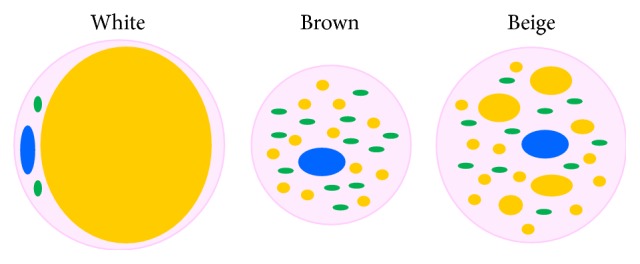Visceral Fat Studies
1. Mitochondria in White, Brown, and Beige Adipocytes
Mitochondria in White, Brown, and Beige Adipocytes
Miroslava Cedikova, 1 , 2 Michaela Kripnerov│, 3 Jana Dvorakova, 4 Pavel Pitule, 2 , 5 Martina Grundmanova, 1 , 2 Vaclav Babuska, 6 Dana Mullerova, 4 and Jitka Kuncova 1 , 2 , *
Mitochondria play a key role in energy metabolism in many tissues, including cardiac and skeletal muscle, brain, liver, and adipose tissue. Three types of adipose depots can be identified in mammals, commonly classified according to their colour appearance: the white (WAT), the brown (BAT), and the beige/brite/brown-like (bAT) adipose tissues. WAT is mainly involved in the storage and mobilization of energy and BAT is predominantly responsible for nonshivering thermogenesis. Recent data suggest that adipocyte mitochondria might play an important role in the development of obesity through defects in mitochondrial lipogenesis and lipolysis, regulation of adipocyte differentiation, apoptosis, production of oxygen radicals, efficiency of oxidative phosphorylation, and regulation of conversion of white adipocytes into brown-like adipocytes.
Main morphological characteristics of white, brown, and beige adipose tissues. White adipocyte cell is classically spherical, it is full of single lipid droplet, and it contains few mitochondria. Brown adipocyte is usually smaller than white and beige ones. It contains a large number of mitochondria and contains multiple small lipid droplets. Blue: nucleus, green: mitochondria, and yellow: lipid droplets.
Mitochondria in White, Brown, and Beige Adipocytes
https://www.ncbi.nlm.nih.gov/pmc/articles/PMC4814709/
